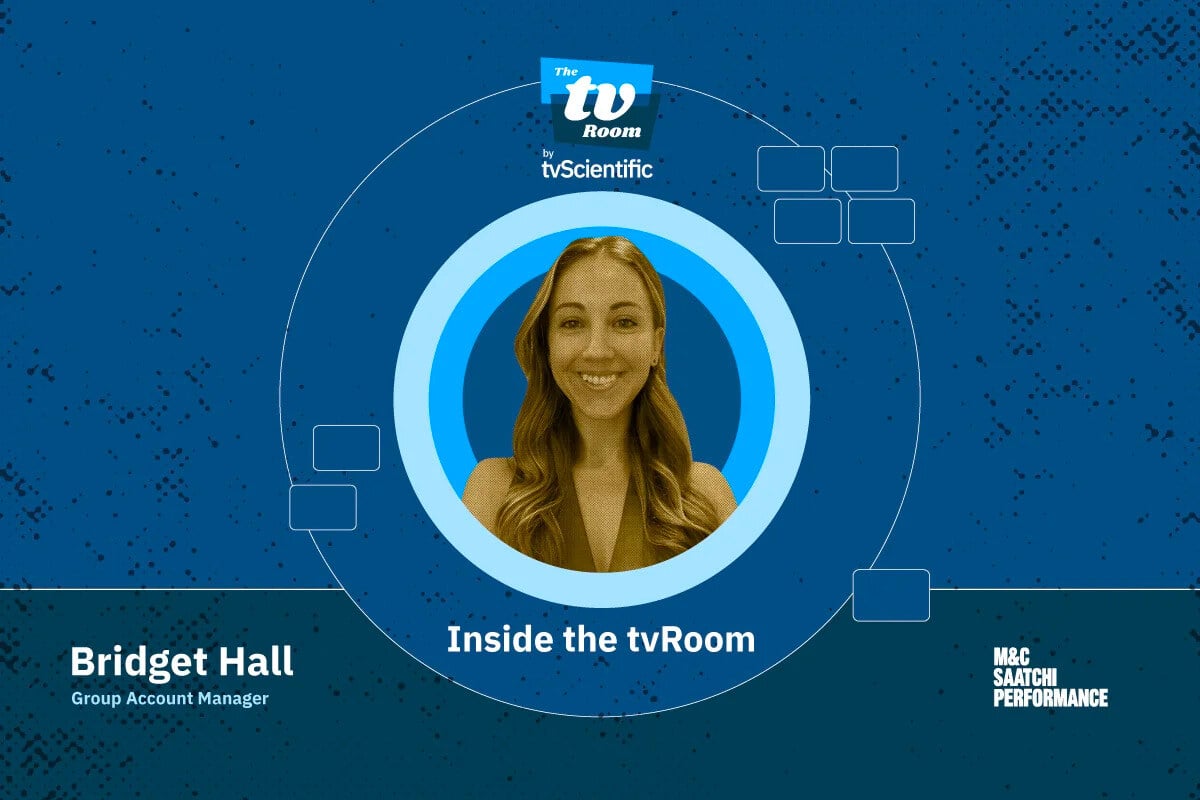Unlock the potential of TV advertising with the art of storytelling. Learn how compelling narratives engage audiences, build brands, and boost sales.
Consumer attention is a prized commodity, and holding your target audience’s gaze is vital. TV advertisements have long been a staple in the marketer's toolkit, but in today's saturated media landscape, they need to be more than just brief interruptions in someone’s favorite show, or the third best part of a Super Bowl watch party.
Great ads need compelling storylines and narratives that engage, resonate, and drive consumers to take action. In this blog, we'll explore the art of brand storytelling as it relates to TV ads and how good storytelling can help marketers build better adverts and holistic marketing campaigns.
The Art of Great Storytelling
Storytelling is an ancient tradition woven into the fabric of human experience. It transcends cultures and endures across generations, from the primitive cave paintings of our ancestors to the latest blockbuster movies. Storytelling’s universal language is how we communicate, connect, and make sense of the world.
When it comes to telling a brand story, TV ads provide a unique platform to harness the art of storytelling, albeit in a condensed format. Here are some of the reasons why TV commercials breathe life into brands and forge strong connections with audiences.
Emotional Connection
Stories evoke emotions and tug at the heartstrings. TV ads that tell a great story make it more likely for your audience to engage emotionally. Emotions are the key to creating memorable and shareable content. Whether it's laughter, empathy, or nostalgia, emotions stick with viewers long after they watch your ad.
Visual Impact
TV allows for powerful visual storytelling that combines moving images, colors, and creative cinematography to engage audiences. The impact of well-crafted video ads enhances brand recall and strengthens the target demographic’s connection with the advertised message.
Memorability
People are more likely to remember a story with a powerful message than a list of product features. Telling stories by weaving your brand message into your content marketing and video production efforts makes it easier for viewers to recall your product or service when they're ready to make a purchase.
Relatability
Great storytelling advertisements are relatable. They draw viewers in by presenting a problem or situation they can identify with — Old Spice helps make you smell better, and Amazon simplifies Christmas and holiday shopping. This establishes a real-life connection between your brand and the viewer's experiences, making your product or service more relevant.
Differentiation
In a sea of commercials, well-crafted and clever stories stand out. They set your brand apart from competitors who may rely on more traditional or basic advertising methods. A unique story can define your brand’s wider marketing strategy and set the tone for your advertising strategy moving forward.
Brand Personality
Stories allow brands to showcase their personality, values, and sense of humor, if appropriate. When viewers connect with a brand’s characters through storytelling, it can help shape a positive perception and encourage brand loyalty.
Engagement
Ask any experienced copywriter: Narratives captivate the attention of potential customers. TV ads that tell a story engage viewers by drawing them into a cohesive and immersive experience, holding their interest longer and increasing the chances of message retention.
Complex Made Simple
Stories simplify complex messages. Whether it's explaining a product's features or conveying a brand's mission, storytelling makes information more digestible and easier for audiences to understand the key message and takeaways.
Cultural Relevance
Creative storytelling allows brands to tap into cultural contexts and societal trends. Ads that make an effort to align with cultural narratives resonate more deeply with audiences, showcasing an understanding of and connection to the world they’re in.
Call to Action
When you move past the basic advertising templates and engage viewers on an emotional level, you make your brand memorable and customers will be more likely to take action. This could be making a purchase, signing up for a newsletter, sharing your ad on social media, or finding the YouTube video to send to their friends.
Examples of Storytelling and Great TV Ads
Let's look at some examples of brands that have effectively harnessed the power of storytelling in their TV ads:
Apple
Apple is known for its emotionally resonant ads. One of their most famous commercials, "Think Different," featured iconic, memorable figures like Albert Einstein and Mahatma Gandhi. This ad didn't just sell products. It sold a vision, a way of thinking. It told a story of innovation and rebellion against the status quo.
Coca-Cola
Coca-Cola's holiday commercials are a prime example of storytelling. Each year, they release heartwarming ads that center around strong holiday themes like unity, family, and happiness. These ads promote a feeling and a sense of togetherness while still featuring their products.
Nike
Nike's famous "Just Do It" campaign is another example of storytelling triumph. By featuring athletes who overcome adversity, the brand tells a story of determination, courage, and the indomitable human spirit. More than just sneakers, these ads are about achieving your goals.
Dove
Dove's "Real Beauty" campaign transformed the way many in society think about beauty. Through stories and testimonials, Dove challenged traditional beauty standards and encouraged viewers to embrace their natural selves. The result was admirable: Increased sales along with a powerful shift in societal attitudes.
Tips for Marketers
To harness the power of storytelling in your TV ads, consider these tips:
Know Your Audience
To truly connect with your target audience, collect and study data on their preferences, values, and challenges. Craft stories that resonate with their aspirations and tap into shared experiences. A deep understanding of your demographic ensures your narrative speaks directly to them and fosters a stronger connection.
Keep It Simple
Compelling stories don’t need to be complicated, so focus on clear messaging and a relatable narrative. A straightforward storyline enhances memorability and ensures that your brand message is communicated effectively with TV ads.
Be Authentic
Authenticity builds trust: Tell stories that genuinely reflect your brand's values and mission. Viewers can detect sincerity, and aligning your narratives with your brand's true identity not only builds trust but also establishes a genuine connection to resonate with your audience.
Evoke Emotion
Emotional engagement is key. Use music, visuals, and storytelling techniques to create an emotional connection with your viewers. Whether it's joy, empathy, or inspiration, an emotional connection strengthens the impact of your TV ad and leaves a lasting impression on the hearts and minds of your audience.
Measure and Iterate
Use data and feedback to measure the effectiveness of your TV ads. Track key metrics, such as viewer engagement and brand recall. Analyzing this data allows you to understand what resonates with your audience and refine your storytelling strategies accordingly. Continuously refine your storytelling based on what works.
The Wrap-up
Consumers are bombarded with ads and the power of storytelling in TV advertisements cannot be overstated. Creating a lasting connection with your audience is as important as showcasing and selling your products or services.
By crafting compelling storytelling with TV ads that engage, resonate, and inspire action, marketers can build stronger brands and drive sales that stand the test of time.
Embrace the power of TV advertising, and elevate your marketing strategy to new heights with tvScientific.





